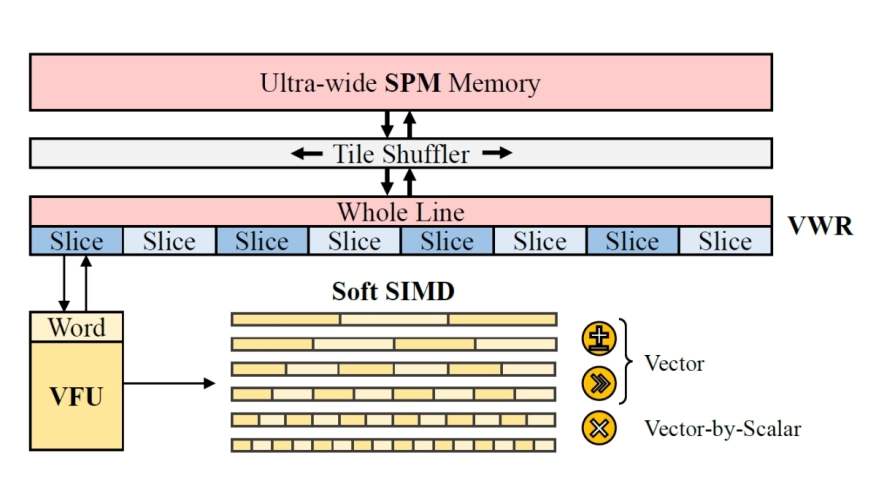Physical Design Exploration of a Wire-Friendly Domain-Specific Processor for Angstrom-Era Nodes
By Lorenzo Ruotolo 1, 4, Lara Orlandic 2, Pengbo Yu 2, Moritz Brunion 4, Daniele Jahier Pagliari 1, Dwaipayan Biswas 4, Giovanni Ansaloni 2, David Atienza 2, Julien Ryckaert 4, Francky Catthoor 3, and Yukai Chen 4
1 Politecnico di Torino, Italy
2 Ecole Polytechnique Fédérale de Lausanne (EPFL), Switzerland
3 National Technical University of Athens, Greece
4 IMEC, Belgium

Abstract
 This paper presents the physical design exploration of a domain-specific processor (DSIP) architecture targeted at machine learning (ML), addressing the challenges of interconnect efficiency in advanced Angstrom-era technologies. The design emphasizes reduced wire length and high core density by utilizing specialized memory structures and SIMD (Single Instruction, Multiple Data) units. Five configurations are synthesized and evaluated using the IMEC A10 nanosheet node PDK. Key physical design metrics are compared across configurations and against VWR2A, a state-of-the-art (SoA) DSIP baseline. Results show that our architecture achieves over 2x lower normalized wire length and more than 3x higher density than the SoA, with low variability in the metrics across all configurations, making it a promising solution for next-generation DSIP designs. These improvements are achieved with minimal manual layout intervention, demonstrating the architecture's intrinsic physical efficiency and potential for low-cost wire-friendly implementation.
This paper presents the physical design exploration of a domain-specific processor (DSIP) architecture targeted at machine learning (ML), addressing the challenges of interconnect efficiency in advanced Angstrom-era technologies. The design emphasizes reduced wire length and high core density by utilizing specialized memory structures and SIMD (Single Instruction, Multiple Data) units. Five configurations are synthesized and evaluated using the IMEC A10 nanosheet node PDK. Key physical design metrics are compared across configurations and against VWR2A, a state-of-the-art (SoA) DSIP baseline. Results show that our architecture achieves over 2x lower normalized wire length and more than 3x higher density than the SoA, with low variability in the metrics across all configurations, making it a promising solution for next-generation DSIP designs. These improvements are achieved with minimal manual layout intervention, demonstrating the architecture's intrinsic physical efficiency and potential for low-cost wire-friendly implementation.
Index Terms—domain-specific processors, machine learning, physical design, nanosheet, wirelength optimization.
To read the full article, click here
Related Semiconductor IP
- Compact Embedded RISC-V Processor
- Neuromorphic Processor IP
- Flexible Pixel Processor Video IP
- Neural Video Processor IP
- GPNPU Processor IP - 32 to 864TOPs
Related Articles
- Design and implementation of a hardened cryptographic coprocessor for a RISC-V 128-bit core
- Customizing a Large Language Model for VHDL Design of High-Performance Microprocessors
- VLSI Physical Design Methodology for ASIC Development with a Flavor of IP Hardening
- Understanding the Importance of Prerequisites in the VLSI Physical Design Stage
Latest Articles
- A 14ns-Latency 9Gb/s 0.44mm² 62pJ/b Short-Blocklength LDPC Decoder ASIC in 22FDX
- Pipeline Stage Resolved Timing Characterization of FPGA and ASIC Implementations of a RISC V Processor
- Lyra: A Hardware-Accelerated RISC-V Verification Framework with Generative Model-Based Processor Fuzzing
- Leveraging FPGAs for Homomorphic Matrix-Vector Multiplication in Oblivious Message Retrieval
- Extending and Accelerating Inner Product Masking with Fault Detection via Instruction Set Extension